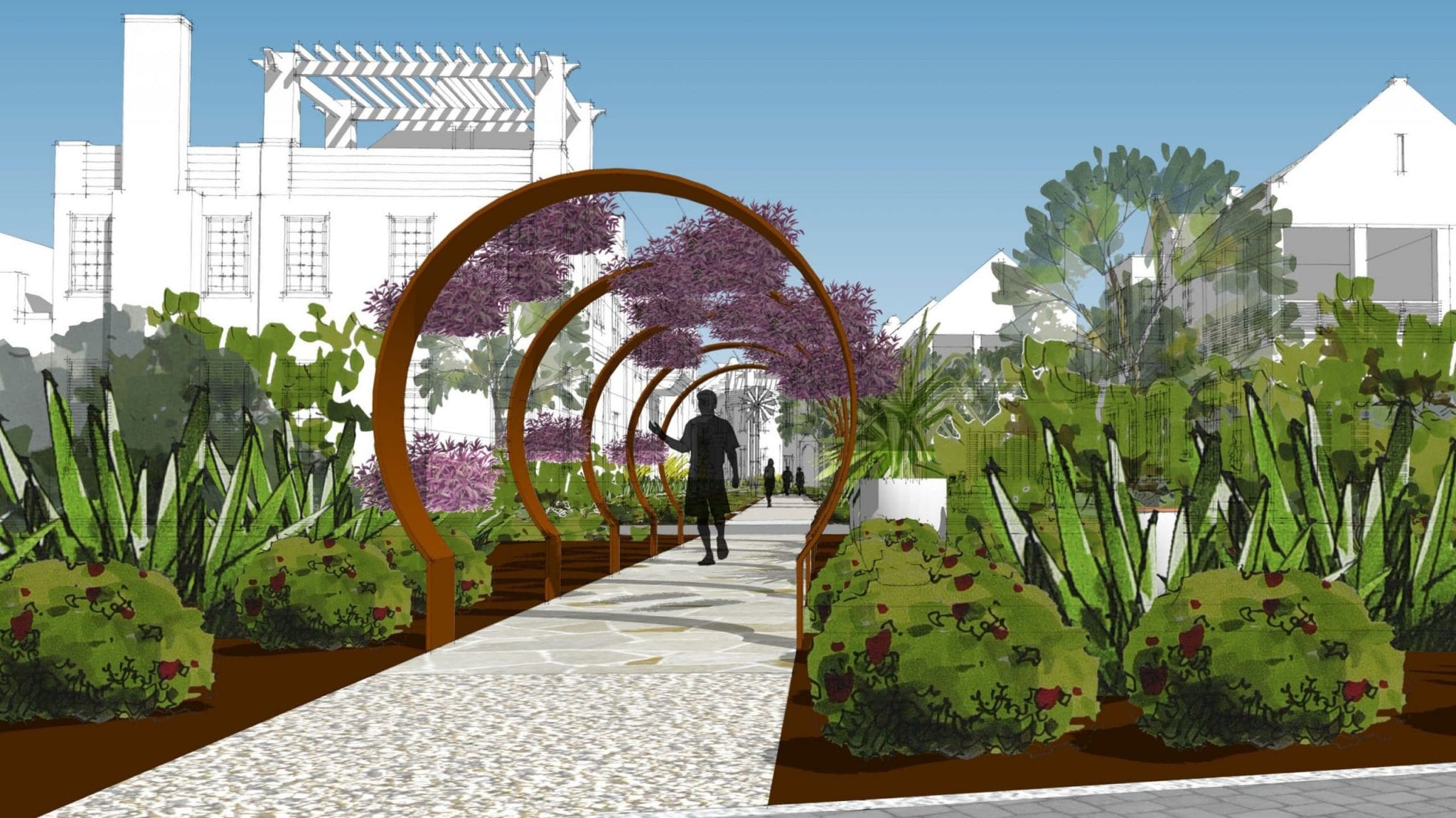One of life’s greatest pleasures is to watch the flutterings of a butterfly, with elaborate patterns and colors that dance on the wind. Expect to see more such flutterings soon at Alys Beach, as the M Block Park takes shape with a focus on plantings for our winged friends. The Park is part of the northernmost extent of a linear park and pathway extending all the way from the wetland preserve south to Turtle Bale Green overlooking the Gulf. The landscape architects for the Park are Patrick Hodges and Chad Horton of Horton Hodges Landscape Architecture, who looked to create habitat for butterflies and birds while keeping the space uncomplicated in arrangement and plant choices.


“We wanted variety but not too crowded a palette,” says Hodges. “Simplicity was one of our design goals.” The design delivers on that pledge with groupings of favorite natives that also provide food and habitat for larval and adult butterflies. Saw palmetto, sand live oak, and yaupon holly all provide food for larval stages of butterflies and are thus known as host plants.
Flowers deliver sweet nectar as food for adults, here in the form of butterfly weed, pink coneflower, plumbago, and others selected to bring year-round blooms to the garden. Feeding butterflies turns out to be quite colorful, with flowers in yellow, purple, orange, and blue. The area surrounding the park is for pedestrians only, with pathways running in multiple directions, and the core of the park a center island of plantings. Lawn areas between landscape beds also function as pathways to make the Park easy to explore. That ease of access helps to bring people and butterflies together for a closer visit, spurring interest in conservation at a time when most butterflies and insects are in steep decline worldwide.


“We’re trying to reach all ages of children and adults,” says Hodges. While the names of the Park’s plants are rich enough, consider a few of the menagerie of butterflies that depend on specific host plants selected by Horton and Hodges: Red-banded hairstreak. Palmetto skipper. Henry’s elfin. Spicebush swallowtail. With flowering plants that attract well-known species such as monarch, eastern tiger swallowtail and Gulf fritillary, it’s a friendly oasis for Lepidopterans (the scientific order representing butterflies and moths). For the designers, there is excitement in the role the Park plays as part of a path that flows from the lushness of a wetland pine forest all the way to the sparse sand and grasses of the seaside. It’s a space that Hodges hopes will offer visitors a pleasant pause along this linear walkway.





